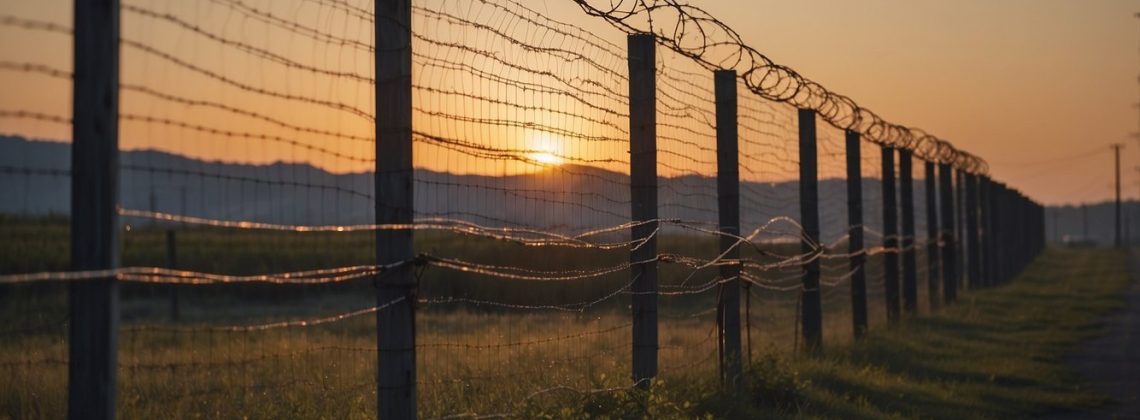
When considering the safety of your bug-out location, the goal is clear: create a secure retreat that you can rely on in case of emergency. Think of this place as your safe haven when the unexpected hits, whether it’s a natural disaster or a societal upheaval. Securing your bug-out location starts with proper planning and incorporating the right measures to ensure it remains your discreet sanctuary.
Imagine having a place where you know you can escape to, a location that provides not just safety but peace of mind. To achieve that security, it’s important to think about the practicalities, such as the location’s accessibility, its visibility to others, and how well it can be defended. You’ll want to consider installing security features that make the place hard to find and even harder to intrude upon. Keep in mind, the essence of a bug-out location is not just in the strength of its locks or the thickness of its walls, but in its ability to blend in and maintain a low profile.
Remember, a bug-out location is not just a pin on a map; it’s an insurance policy against chaos. So when you’re setting up your safe spot, it’s essential to be strategic about its security. A few strategic measures could significantly increase the safety of your hideaway. By keeping these factors in mind, you’re taking proactive steps to ensure that when you need it the most, your bug-out location will be ready to serve as a secure and reliable refuge.
Understanding the Concept of a Bug-Out Location
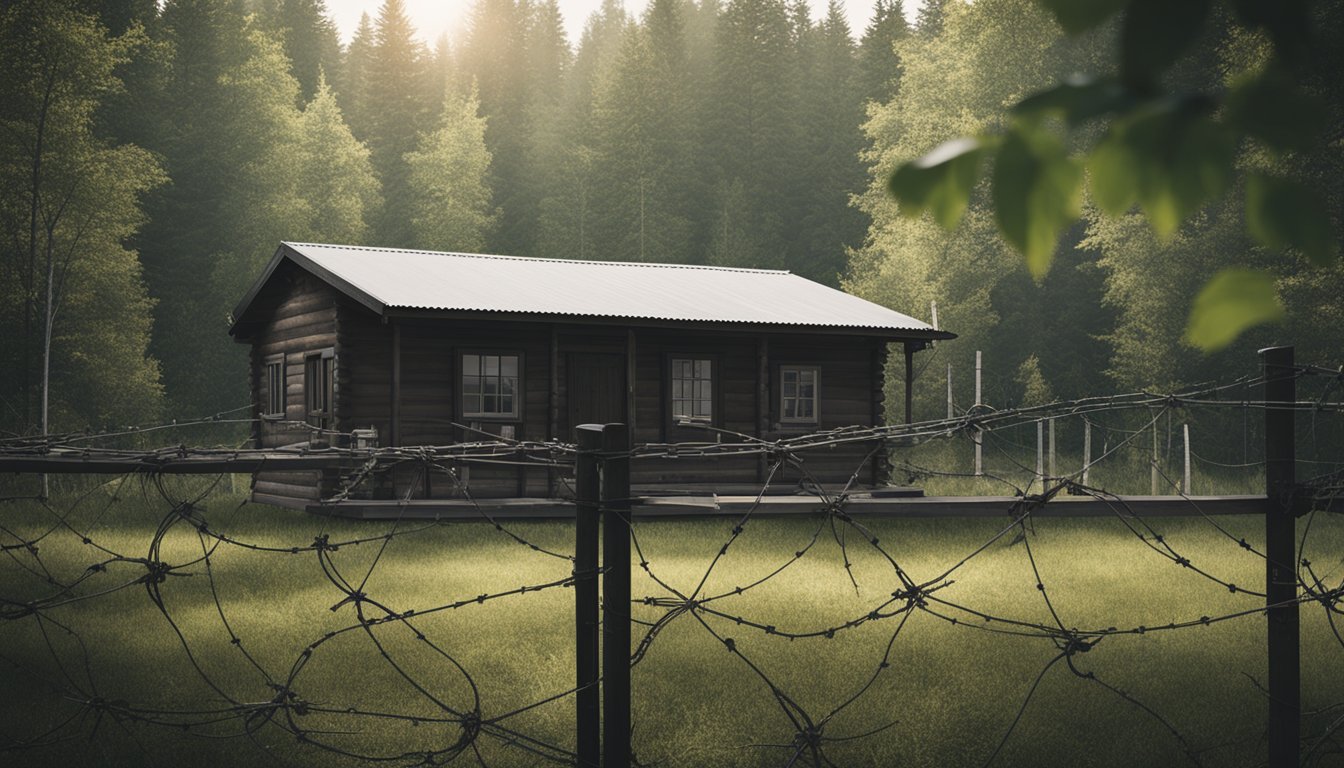
In prepping for emergencies, your safety hinges on a well-thought-out bug-out location. It’s not only about having a second property but ensuring it remains secure when you need it most.
Defining a Bug-Out Location
A bug-out location is a designated safe haven you retreat to when your primary residence is no longer safe due to emergencies such as natural disasters, civil unrest, or other catastrophic events. This location should be strategically chosen, easily accessible to you, yet difficult for others to stumble upon without your consent. It’s your fallback spot, equipped to support you for an extended period.
Importance of Having a Secure Bug-Out Location
Ensuring your bug-out location is secure is essential for several reasons:
- Maintaining Safety: Your bug-out spot should offer protection against potential hazards, both natural and human-made.
- Preserving Resources: It needs to safeguard your stored resources – water, food, and medical supplies – against theft or damage.
- Providing Peace of Mind: Knowing you have a secure place to go can offer significant psychological comfort in chaotic times.
Your bug-out location’s security measures might include robust locks, discreet storage solutions, and subtle signs of occupancy to deter potential intruders. It’s about being prepared and staying one step ahead, so when if the time comes, you’re ready to go.
Choosing the Right Location
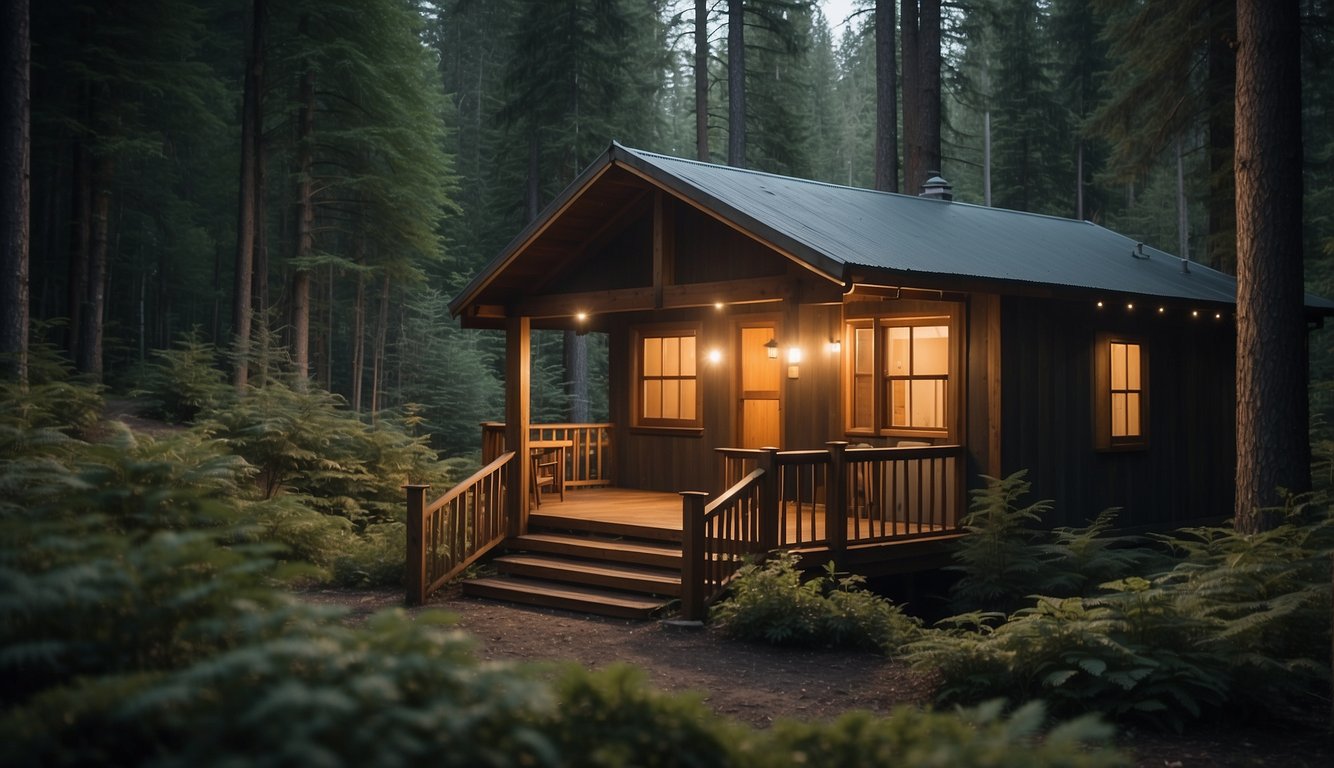
When the going gets tough, having the right bug-out location can be a game-changer for your safety and security. Here, you’ll learn about the specifics like where to set up, how to leverage the land, and ensuring long-term sustainability.
Geographic Considerations
Your bug-out spot needs to tick off certain geographical boxes to qualify as secure. You want to consider:
- Elevation: Higher ground gives you a visibility advantage and is less prone to flooding.
- Isolation: A hidden gem, away from main roads, reduces the chances of unwanted encounters but should still be reachable without Herculean effort.
Strategic Positioning
In terms of strategy, the location should feature:
- Limited Access Points: Fewer entrances mean easier monitoring and defense.
- Natural Barriers: Thick forests, mountains, or water bodies can act as deterrents to others while providing you with natural cover.
Natural Resources and Sustainability
Your survival hinges on the resources at hand:
- Water Source: A nearby stream, river, or lake is essential. Not only for drinking but for hygiene and possibly food.
- Arable Land: If you can grow your own food, that’s a big plus. Healthy soil and a suitable climate are your friends here.
By picking a spot that aligns with these criteria, your bug-out location won’t just be a temporary refuge, but a secure and self-reliant stronghold.
Structural Fortifications
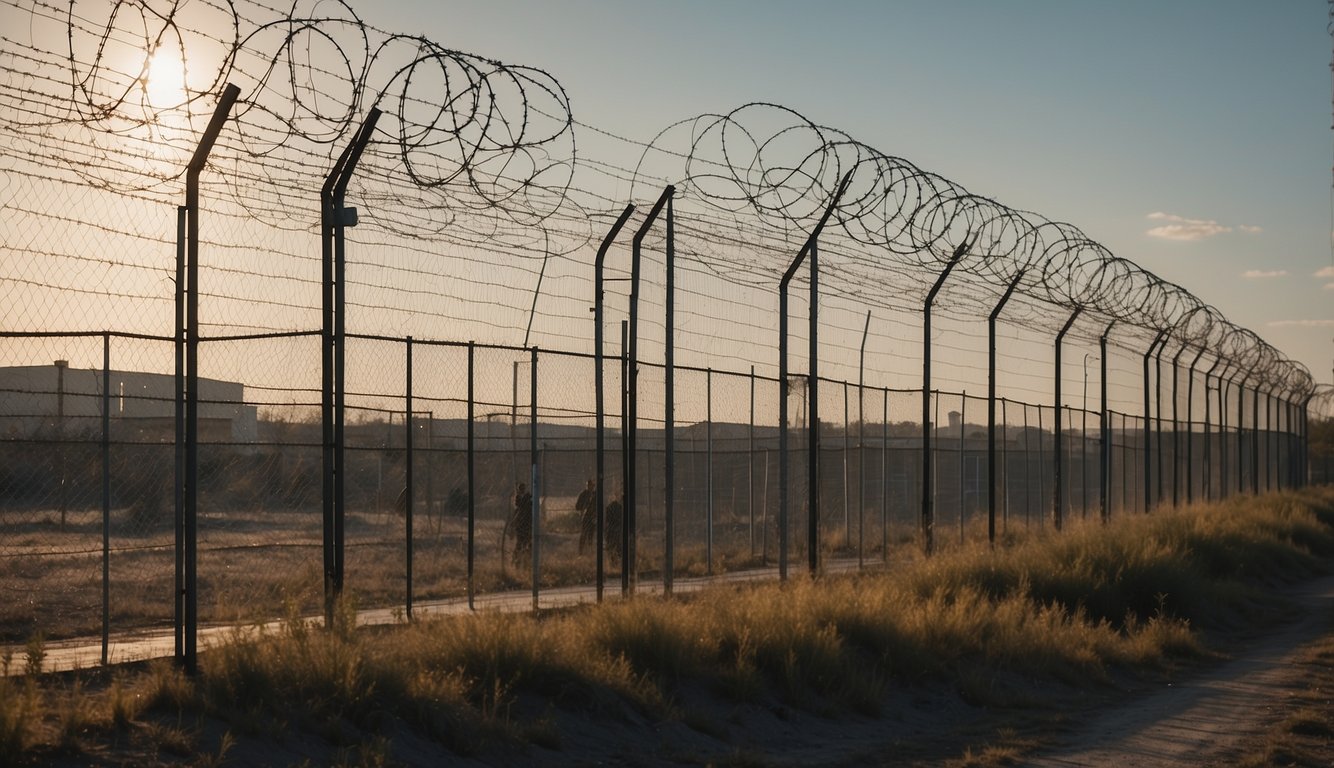
To keep your bug-out location secure, focus on fortifying its structure. Your aim is to reinforce against intrusions and ensure safety within the walls.
Reinforcing Entry Points
Your doors and windows are the most common access points for intruders.
- Doors: Replace standard door hinges and screws with longer, stronger ones. Install deadbolts and consider a door barricade bar for added strength.
- Windows: Apply security film to the glass to prevent shattering and consider installing bars or grates.
Creating Safe Zones
Designate secure areas within your property that can act as a last line of defense.
- Establish a safe room with reinforced walls and limited entry points.
- Keep communication devices and emergency supplies stocked in this secure space.
Concealment Strategies
Minimizing visibility can be just as important as physical barriers.
- Landscaping: Use natural elements such as shrubs for concealment and avoid clear lines of sight to your safe zones.
- For your perimeter, opt for strategic fencing that is difficult to climb and obscures what’s inside from view.
Perimeter Security
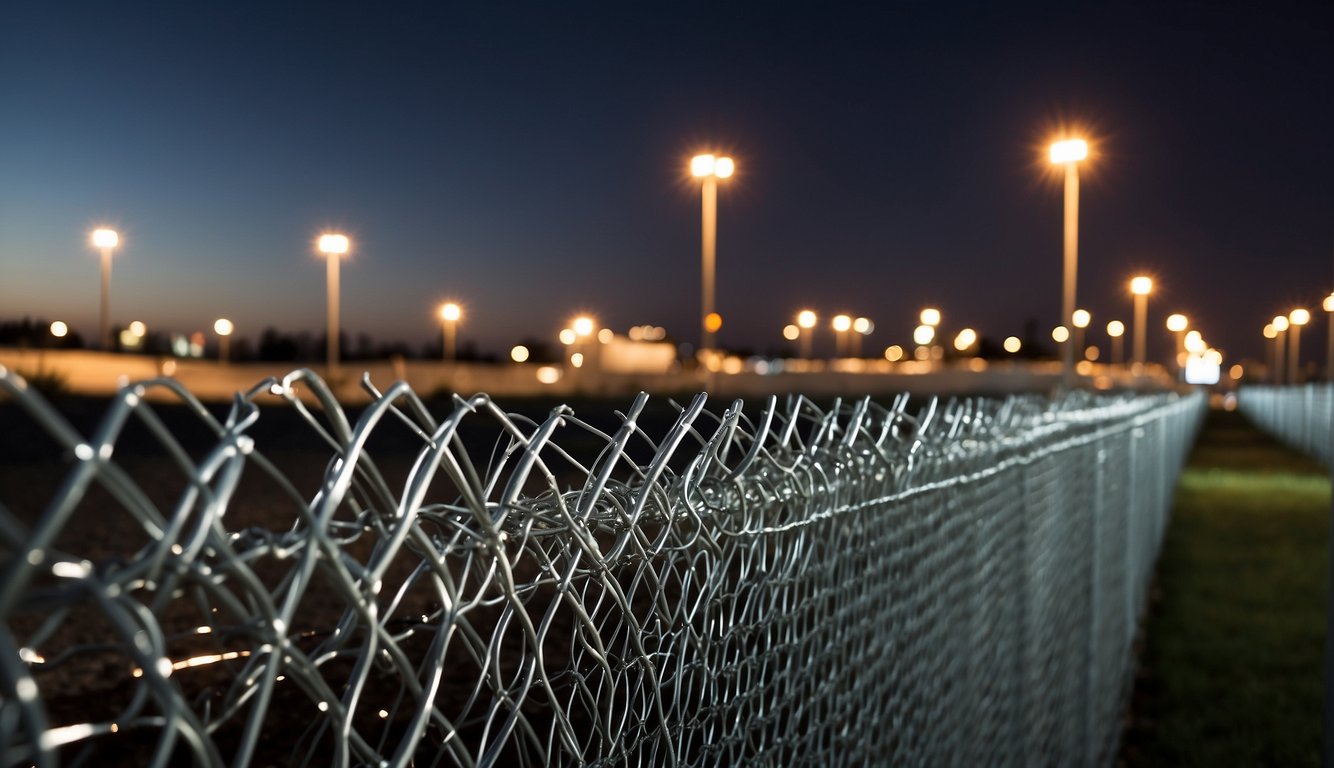
When you’re setting up your bug-out location, perimeter security should be your top priority. It’s your first line of defense against uninvited guests, helping you maintain control and safety. Here are the essentials to fortify the boundaries of your safe haven.
Fencing and Barriers
Your fencing should be tough enough to discourage would-be intruders. Here’s what to consider:
- Material: Go with chain-link or solid wood panels, as these are harder to breach.
- Height: Aim for at least 8 feet tall to prevent easy climbing.
- Deterrents: Incorporate barbed wire, spikes, or anti-climb paint to add another layer of discouragement.
Remember, your fence is only a physical barrier – it won’t alert you to someone’s presence.
Surveillance Systems
A good view of what’s happening around your property is non-negotiable.
- Cameras: Install them strategically to cover blind spots and entry points. Ensure they have night vision capabilities.
- Motion Sensors: These can alert you to activity around your perimeter. Opt for systems that integrate with your smartphone for real-time updates.
- Drones: They can offer aerial surveillance, especially in larger areas where ground monitoring is insufficient.
Surveillance tech should complement physical barriers, acting as your eyes where you can’t physically be.
Access Control
Control who can and can’t enter your property; don’t leave it to chance.
- Gates: Equip them with locks, whether traditional or electronic, and consider adding a keypad or keycard system.
- Entry Procedures: Have a plan for verifying and admitting visitors, which might include intercom systems for remote communication.
By managing access, you ensure that only those who belong can get in, giving you the peace of mind that you’re as secure as possible.
Operational Security Measures
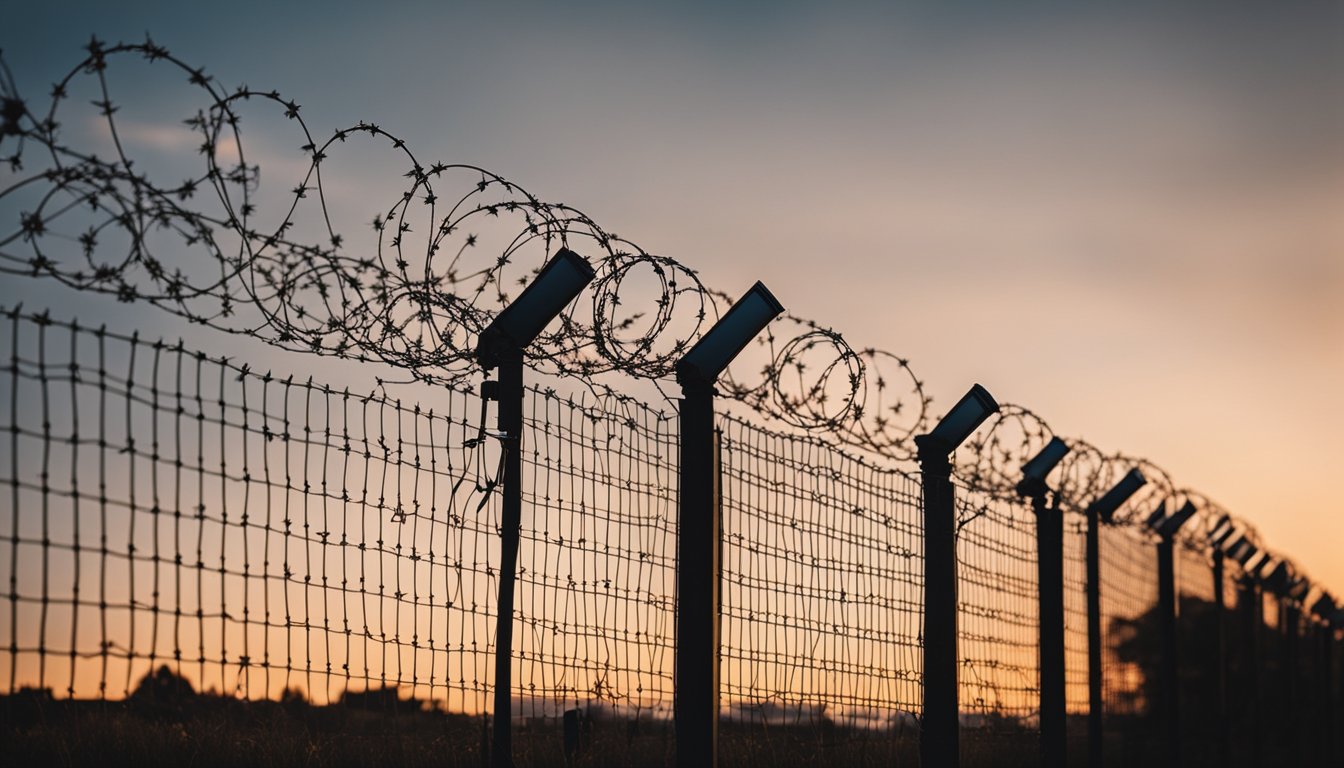
When prepping your bug-out location, operational security (OPSEC) isn’t just a fancy term—it’s your playbook for keeping your safe haven secure from unwelcome eyes and threats. Let’s break down what you need to focus on: developing tight security protocols, ensuring everyone’s trained and ready, and setting up reliable comms systems.
Developing Security Protocols
First thing’s first: You’ve got to have a solid plan. Security protocols are your guidelines on how to keep your bug-out spot under wraps. Map out who accesses what and when. It’s like your very own secret recipe for safety:
- Access Control: Only those who need to know—know. Implement a strict policy on who can get into your location and handle sensitive info.
- Regular Auditing: Keep track of who’s been where by logging entries and exits. It’ll help you spot any odd patterns.
Training and Preparedness
Your protocols are only as good as the people who follow them. Everyone in your circle needs to be clued up on what to do and how to do it. Drill the following into your team:
- Practice Routine Drills: Run surprise scenarios to keep everyone sharp. Think fire drills but for security breaches.
- Establish a Culture of Security: Emphasize the importance of security in day-to-day activities.
Communication Systems
No man is an island, and neither is your bug-out location. Here’s how to stay connected without giving the game away:
- Encrypted Channels: Go for radios or apps that offer strong encryption. You don’t want your plans broadcasted to the world.
- Backup Comms: Always have a secondary way to communicate. If the grid goes down, have a hand-crank radio at the ready.
Stringent OPSEC could make the difference between you enjoying peace of mind or facing unforeseen risks at your bug-out spot. Keep these measures in check, and your location will remain that hidden gem you need it to be.
Sustainable Security
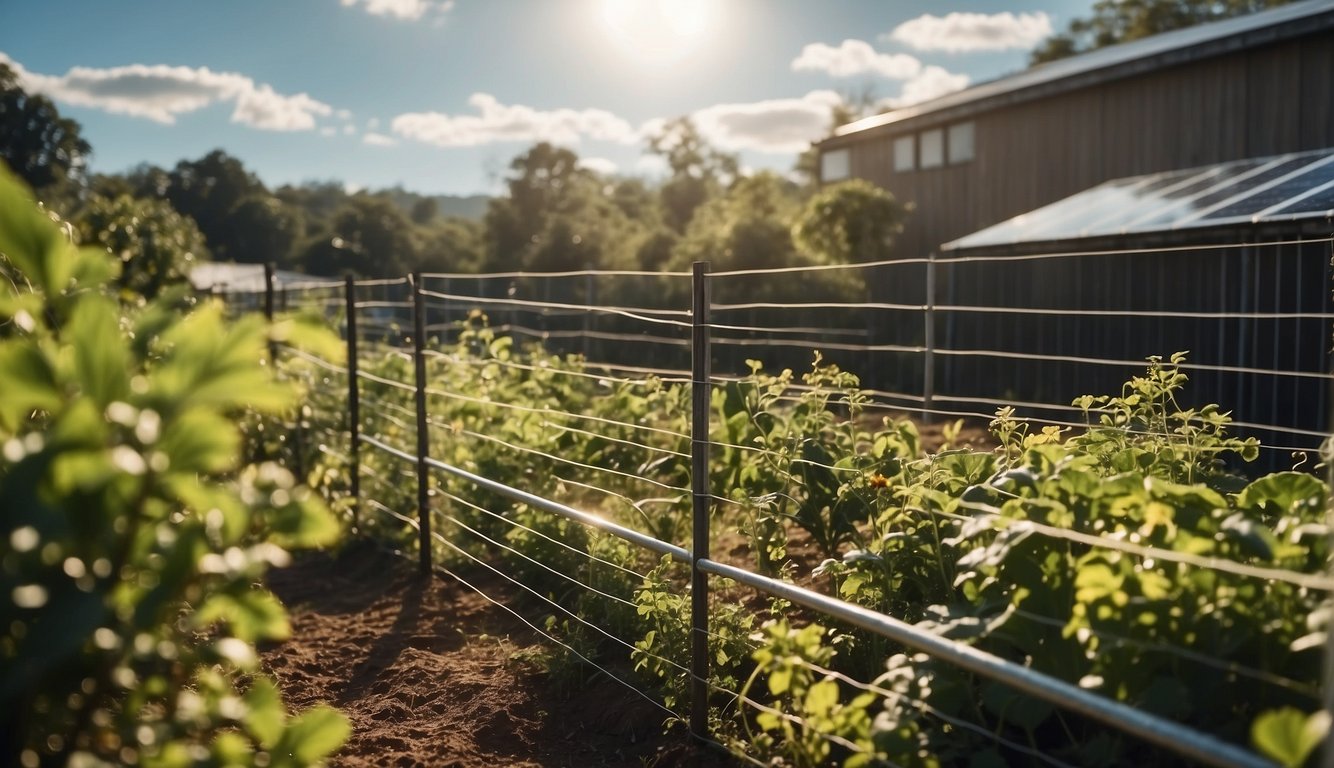
To protect your bug out location long-term, you need to think beyond just locks and fortifications. Sustainability is the game-changer here, ensuring that your security measures won’t run out of steam when you need them the most.
Renewable Energy Sources
To keep your security systems running, solar panels are a wise choice. They’re quiet, don’t require fuel, and the sun isn’t likely to go on strike anytime soon. Wind turbines are another option for harnessing energy, but they’re much more visible and could draw unwanted attention. Here’s a simple way to estimate your energy needs:
| Appliance | Power Usage (Watts) | Daily Usage (Hours) | Daily Energy (Wh) |
|---|---|---|---|
| Security Lights | 10 | 12 | 120 |
| Surveillance Camera | 5 | 24 | 120 |
| Radio Communication | 6 | 8 | 48 |
Total Daily Energy: 288Wh
Food and Water Security
You can’t talk about sustainable security without mentioning food and water. Start with a plan for a steady supply of clean water. Maybe that means a well on-site or a nearby natural source with a solid filtration system. For food, think permaculture—integrating plants and animals into the natural landscape. Aim for:
- A diverse mix of crops to ensure harvest throughout the season.
- Small livestock like chickens for eggs and meat.
Remember, the more self-reliant you are, the less you’ll need to leave your bug out spot, which keeps it off the radar.
Waste Management
Lastly, waste management is crucial for staying stealthy and healthy. Composting toilets help you deal with human waste effectively, turning a potential problem into fertilizer for your crops. For garbage, you’ll want to reduce, reuse, and recycle as much as possible, keeping waste to a minimum to avoid drawing in unwanted wildlife or odors that signal your presence.
Set up separate bins for different types of waste:
- Compostable (organic waste)
- Recyclable (paper, plastic, metal, glass)
- Landfill (everything else)
Implementing these sustainable security measures will fortify your location without tipping off anyone—or anything—that you’re there.
Community Defense Strategies
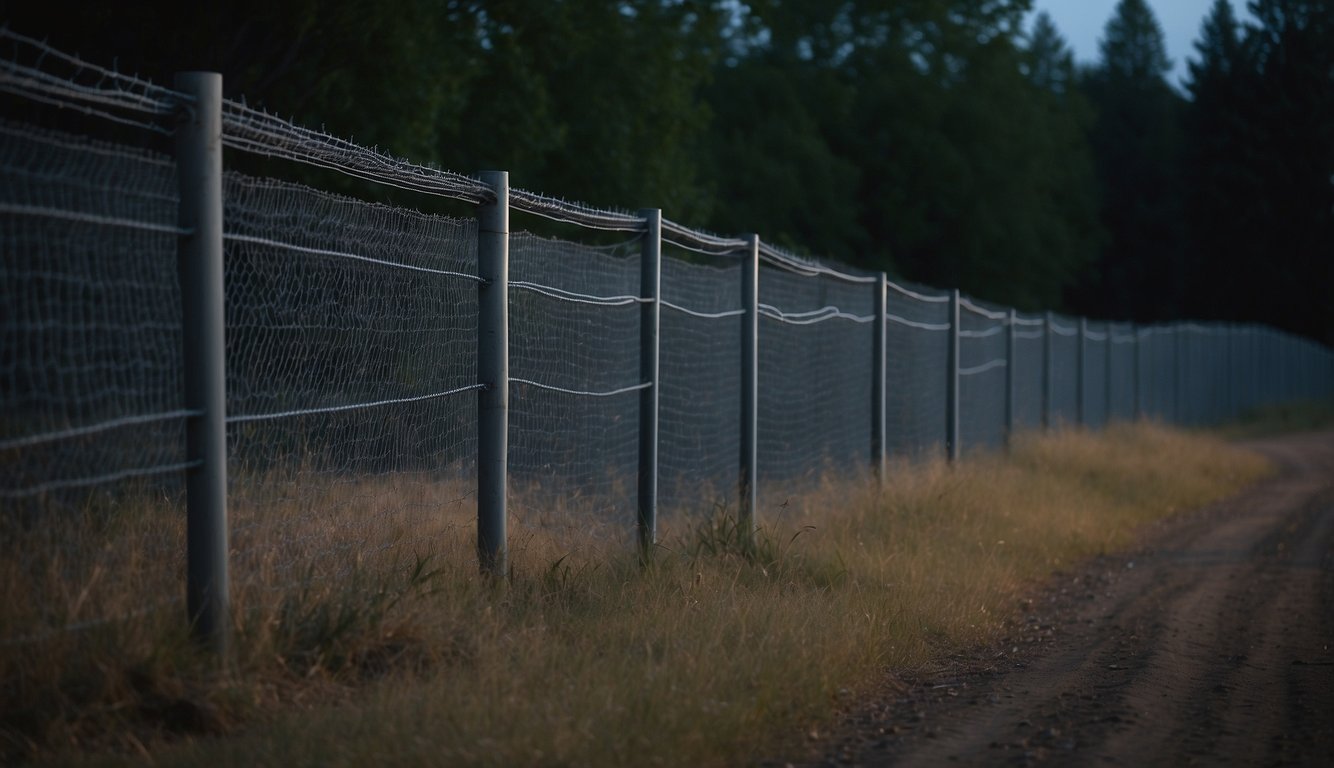
When considering the security of your bug-out location, engaging with the surrounding community extends your defensive capabilities beyond the bounds of your property. Collaboration and preparedness can enhance the safety of the entire area.
Building Trust with Neighbors
Start by getting to know your neighbors. Simple gestures like participating in local events or lending a hand when needed can help build a community bond. When you have trust established, discuss shared concerns and how you can support each other in times of need. A resilient community starts with strong relationships.
Establishing Mutual Aid Agreements
Once trust is built, consider forming mutual aid agreements. These are commitments amongst neighbors to provide assistance to each other, pooling resources such as food, water, medical supplies, and skills that enhance collective defense and survival. Be specific about the resources you can share and the circumstances under which you’d provide aid. This not only fortifies your immediate bug-out location but ensures regional stability.
Defensive Tactics Training
Encourage and participate in defensive tactics training as a group. Organize workshops that cover:
- Basic self-defense: Everyone should be familiar with personal protection techniques.
- Operational security (OPSEC): Learn how to protect your community’s sensitive information from potential threats.
- Strategic planning for defense: Understand how to effectively respond to various threat scenarios.
By training together, your community will be better prepared to act cohesively and defend your bug-out location. Remember, the strength of individual locations often depends on the collective preparedness and response of the community.
Maintaining and Adapting Security Measures
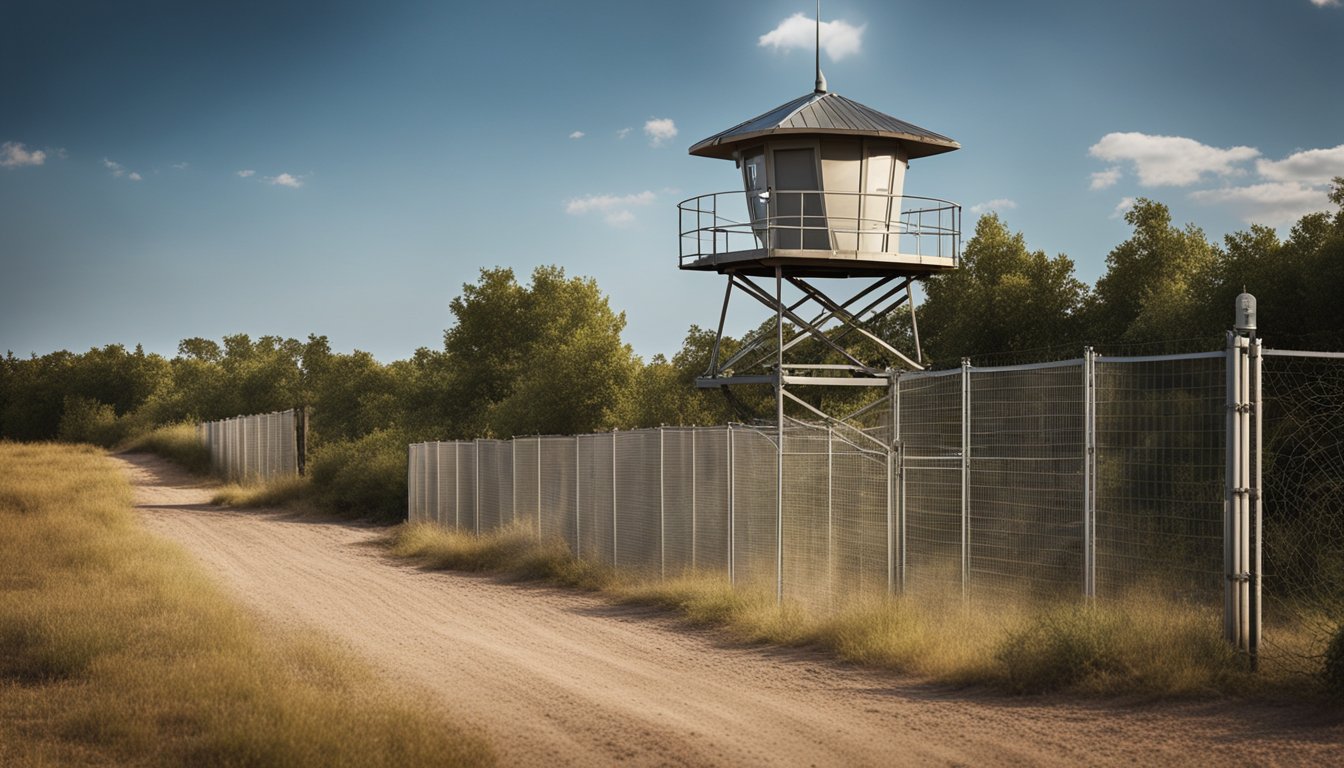
Your bug-out location’s security isn’t a set-and-forget deal. It’s vital to keep up with regular maintenance and stay on top of new security technologies and evolving threats.
Regular Inspections
You should conduct scheduled inspections of your bug-out location to ensure all security measures are functional. Here’s a quick checklist to guide you:
- Perimeter Fences/Gates: Check for damage or signs of tampering.
- Locking Mechanisms: Confirm they’re in working order.
- Alarm Systems: Test sensors and batteries regularly.
Upgrading Technology
As time goes on, new and improved security technologies arise. Keep an eye out for:
- High-Definition Security Cameras: Swap out old cameras for clearer footage.
- Smart Locks: Consider upgrades to include remote monitoring and control.
- Motion-Activated Lighting: Install lighting that is more sensitive or covers a larger area.
Adapting to Changing Threats
What was secure yesterday might not cut it today. Your adaptability is key.
- Stay Informed: Keep abreast of local crime trends or environmental risks that may affect your location.
- Community Ties: Engage with neighbors or local watch groups to share information and resources.
- Training: Regularly practice your response to potential threats to ensure readiness.
Frequently Asked Questions
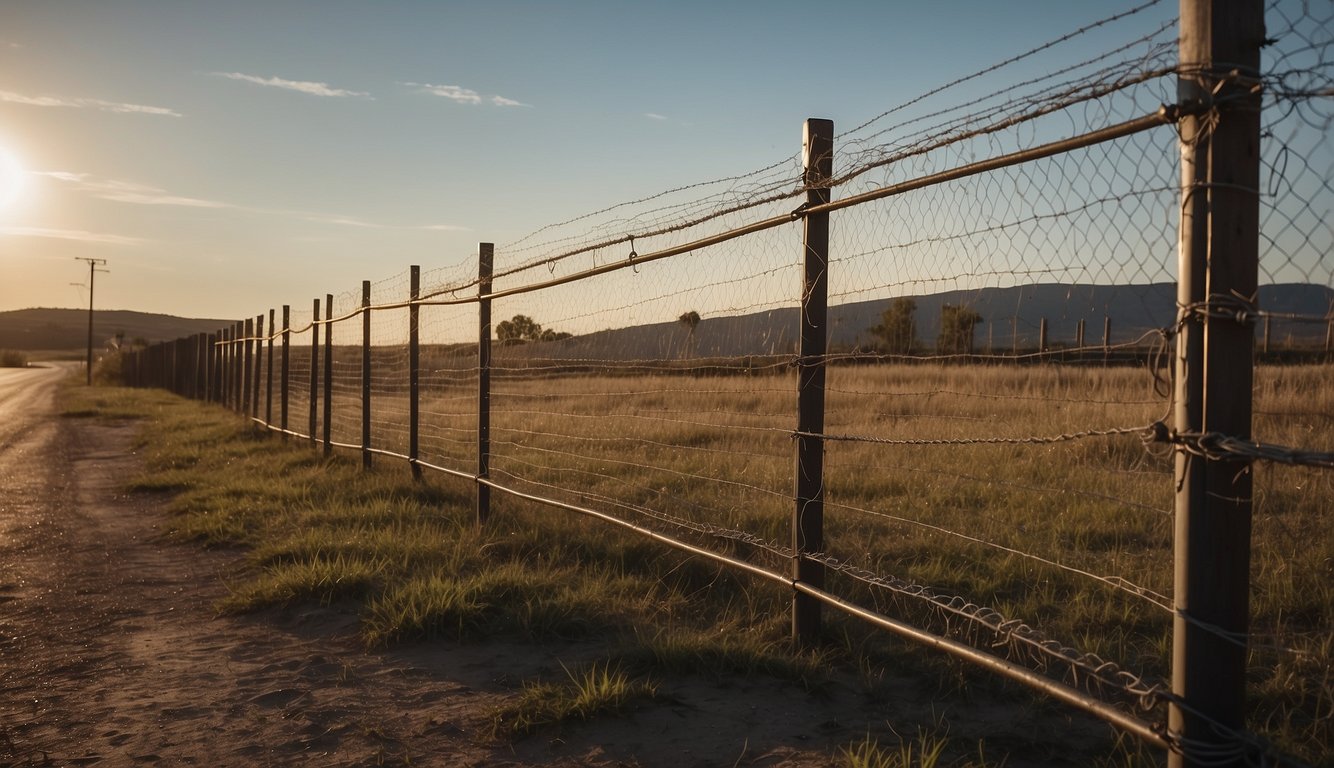
Getting to grips with ensuring your bug-out location is secure can throw up a lot of questions. Let’s iron out some of the most common queries so you’re better prepped to protect your spot.
What’s the ideal distance for a safe bug-out spot?
The best range for a bug-out location is typically within 4 to 5 days’ walking distance from your home, translating to roughly 50-60 miles at an average walking pace of 10 to 12 miles per day. This ensures it’s reachable on foot if necessary.
Can you secure a makeshift bug-out spot on the fly?
Yes, you can secure a temporary bug-out spot quickly if you’ve planned ahead. Deciding on a few possible locations, familiarizing yourself with the area, and preparing a contingency plan for last-minute shelter creation is key.
What are the top home fortification strategies for emergencies?
For home fortification during emergencies, focus on reinforcing entry points with quality locks and doors, installing security systems, and using natural barriers if available. It’s also smart to have a discreet safe room or hidden storage for essential supplies.
What should be in your bag when it’s time to bug out?
Your bug-out bag should contain essentials like water, food rations, first-aid supplies, a multi-tool, personal documents, clothing for all weather conditions, and self-defense items. Customize it based on personal needs and the nature of the emergency.
How do you keep your bug-out location secret?
Limiting the number of people who know about your bug-out location is crucial. Avoid posting about it on social media or talking about it in public places. Discretion ensures its security and availability when you need it most.
What’s the best way to maintain supplies at a bug-out location?
Regularly rotating your stockpile to keep supplies fresh and checking for damage or spoilage is essential. Consider storing non-perishables and items with long shelf lives, and keep inventory records accurate and up-to-date for efficient supply maintenance.

Leave a Reply